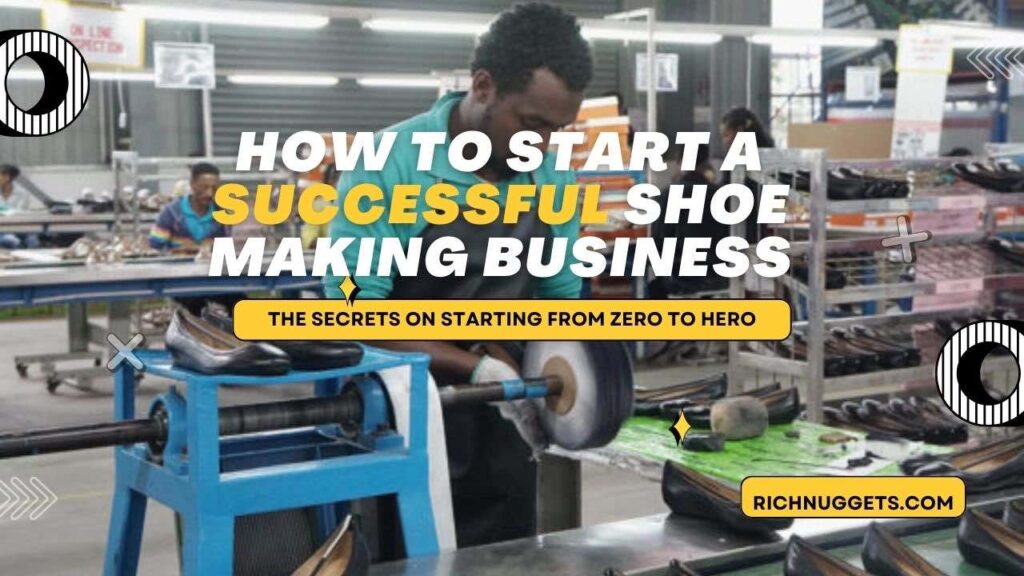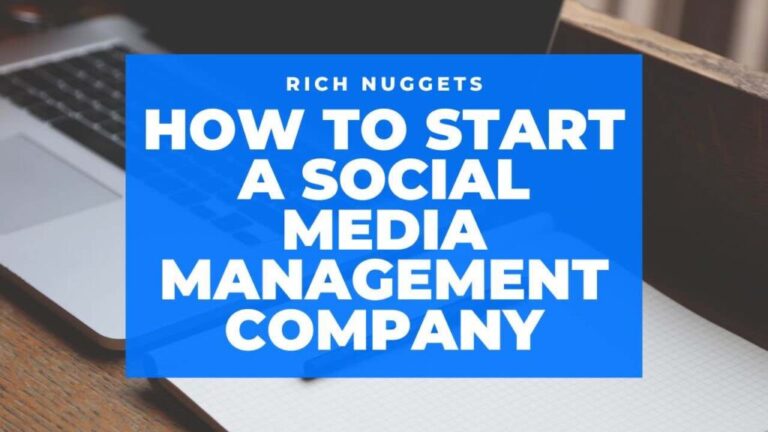
Shoe making business, also known as footwear manufacturing, involves the production of shoes for various purposes such as casual wear, formal wear, sports, and specialized activities. It encompasses a wide range of processes including designing, pattern making, cutting, stitching, assembling, and finishing.
The shoe making business can be conducted on a small scale, with handmade or custom shoes, or on a large scale with automated machinery for mass production.
But whichever scale you choose to run your shoe making business one thing is common, it requires a combination of craftsmanship, technical knowledge, and business acumen to succeed.
Key aspects of a shoe making business include sourcing quality materials such as leather, rubber, fabrics, and synthetic materials, as well as staying updated with fashion trends and consumer preferences. Marketing and distribution are also crucial for reaching customers through retail stores, online platforms, or partnerships with wholesalers and retailers.
In this article, we shall be discussing how you can start your own shoe making business in Nigeria or in your own country.
Table of Contents
1. Get your Shoe Making Skills:
This step is about acquiring the expertise required to produce high-quality footwear.
To achieve this, you should attend training programs or workshops specifically focused on shoe making.
These programs provide structured learning experiences where participants can gain insights into various aspects of the craft, including materials selection, pattern making, cutting techniques, stitching methods, and finishing touches.
Another option is to apprentice under an experienced shoemaker who can impart their knowledge and skills through hands-on training.
This apprenticeship allows you to learn the intricacies of shoe making firsthand, observe techniques in action, and receive personalized guidance and feedback from experienced professional.
By investing time and effort in acquiring shoe making skills through formal training or apprenticeship, you can build a solid foundation of expertise that will enable you to produce quality footwear and effectively manage your own shoe making business.
2. Decide the Type of Shoes your Shoe Making Business will be Known for:
This decision involves determining the niche or specialization of your business, which can range from producing leather sandals to formal shoes, sneakers, specialized types like orthopedic or custom-made shoes, or even a combination of different styles.
By selecting a particular type of shoe to focus on, you establish a clear identity for your brand and target market. This specialization allows you to tailor your products and marketing efforts to meet the specific needs and preferences of your chosen customer base.
For example, if you decide to specialize in leather sandals, you should concentrate on sourcing high-quality leather materials, perfecting the craftsmanship of sandal making, and designing styles that appeal to customers looking for comfortable and stylish footwear for casual wear.
On the other hand, if your shoe making business focuses on formal shoes, you should prioritize using premium materials, such as fine leather and high-quality soles, to create elegant and sophisticated footwear suitable for special occasions and professional settings.
By having a clear focus on the type of shoes your business will be known for, you easily differentiate yourself from competitors, build a strong brand reputation, and effectively target your marketing efforts to attract customers who are interested in your specific product offerings.
3. Get your Shop:
Once you’ve acquired the necessary skills and decided on your niche, it’s time to secure your shop.
Depending on your budget and scale of operation, you can either rent a physical space or start from your home.
Ensure the shop is situated in a strategic area with good visibility and accessibility to your target market.
After securing the shop the next thing you want to do is to equip your shop with the necessary tools, equipment, and materials for shoe making.
4. Get your Equipment:
You must invest in the essential tools and machinery required for shoe making. This typically includes common items like sewing machines, cutting tools, lasting machines, finishing equipment, and other specialized machinery depending on the specific niche of your business.
Quality equipment is crucial as it contributes to the efficiency and overall quality of your production process.
Here is a list of essential shoe making equipment and tools you must have in your shop:
- Sewing Machine: Used for stitching various parts of the shoe together, such as the upper, lining, and insole.
- Cutting Machine or Tools: Essential for cutting out patterns and shapes from leather, fabric, or other materials used in shoe making.
- Lasting Machine: Used to shape and form the shoe upper around the last (foot-shaped form) during the lasting process.
- Finishing Equipment: Includes tools for trimming excess material, sanding edges, and polishing the finished shoes for a professional appearance.
- Skiving Machine: Used to thin down the edges of leather or other materials to create smooth and even seams.
- Leather Splitting Machine: Enables you to split leather into thinner layers for various shoe components like insoles or linings.
- Clicking Press: A hydraulic press used for cutting out precise shapes from materials, often used for cutting out soles and other components.
- Edge Paint Machine: Used for applying edge paint or finish to the edges of shoe components for a clean and polished look.
- Hammer and Lasting Pincers: Hand tools used for shaping and securing shoe components during the lasting process.
- Heat Gun or Hot Knife: Used for heat-sealing seams, molding certain materials, or cutting through materials like foam or synthetic fabrics.
- Workbench: A sturdy surface for assembling and working on shoe components, with storage space for tools and materials.
- Measurement Tools: Including rulers, measuring tapes, and calipers for ensuring accuracy in cutting and assembling shoe components.
- Eyelet and Rivet Setting Tools: For attaching eyelets, rivets, and other hardware to the shoe upper or sole.
- Grinding and Buffing Machines: Used for shaping and smoothing out shoe components and finishing surfaces.
- Packaging Equipment: Includes boxes, wrapping materials, and labeling tools for packaging and presenting finished shoes for sale.
Other specific tools required will be dependent on the type of footwear you produce and your production processes.
High-quality machinery ensures precision and consistency in manufacturing, leading to better-finished products.
Additionally, reliable equipment help reduce downtime and maintenance costs, allowing for smoother operations and increased productivity in your shoe making business.
5. Hire Staff and Accept Trainees:
Hiring staff and accepting trainees are important steps as your shoe making business grows.
Hiring at least one staff member will help you handle various tasks related to production, administration, or customer service more efficiently.
This additional help alleviate your workload and enable you to focus on other aspects of running the business, such as business development or expanding your product line.
Furthermore, being open to accepting trainees or apprentices who are eager to learn the craft of shoe making is beneficial in several ways.
Firstly, it allows you to pass on your skills and knowledge to the next generation of artisans, contributing to the preservation and continuation of the craft.
Additionally, training others help you refine your own techniques and approaches, as teaching often requires a deeper understanding of the subject matter.
Moreover, accepting trainees or apprentices expands your network within the industry and potentially increases your pool of skilled workers in the future.
By nurturing talent and providing valuable learning experiences, you also attract passionate individuals who are dedicated to the craft and willing to contribute to the growth of your business.
6. Market and Sell Your Products:
It’s essential to develop a marketing plan that outlines your objectives, target audience, messaging, and channels to be utilized.
This plan serves as a roadmap for your marketing efforts and ensures consistency and coherence in your promotional activities.
Here are efficient and effective marketing channels that are best used to promote and sell your shoe making business products:
- Social Media Platforms: Utilize platforms such as Instagram, Facebook, X, and Pinterest to showcase your shoe designs, engage with your audience through posts and stories, and run targeted advertising campaigns to reach potential customers.
- Online Marketplaces: List your products on popular online marketplaces like JiJi, Jumia, Konga, Etsy, Amazon Handmade, or/and eBay to reach a broader audience of online shoppers who are specifically looking for handmade or unique footwear.
- Website and Online Store: Create a professional website or online store where customers can browse your shoe collections, learn about your brand story, and make purchases. Optimize your website for search engines to improve visibility and attract organic traffic.
- Fashion Blogs and Influencers: Collaborate with fashion bloggers, influencers, and YouTubers who have a following interested in footwear and fashion. Partnering with influencers can help increase brand awareness and drive traffic to your online store.
- Local Markets and Pop-Up Shops: Participate in local markets, craft fairs, and pop-up shops to showcase your shoes to a local audience. These events provide opportunities for face-to-face interactions with customers and allow you to receive immediate feedback on your products.
- Collaborations and Partnerships: Partner with complementary businesses such as clothing boutiques, fashion designers, or accessory brands to cross-promote each other’s products. Collaborations can help expand your reach to new audiences and create buzz around your shoe brand.
- Google Ads and Search Engine Optimization (SEO): Invest in Google Ads to appear at the top of search results when potential customers are looking for specific types of shoes. Additionally, optimize your website for SEO to improve its ranking in organic search results for relevant keywords.
Note, the online marketing and sales channel should only be considered when you have the capacity to expand your reach and meet the demand of a broader audience.
Capital Needed to Start a Shoe Making Business
The shoe making business is not capital intensive, with a minimum of N100,000 Naira you can start a profitable small scale shoe making business in Nigeria that can grow into a large scale in the shortest time possible if efficiently and effectively run.
This capital will be spent on:
- Training and Skill Acquisition: You will need to invest in training programs or workshops to acquire the necessary skills for your shoe making. This include the cost of tuition fees, materials, and tools for training.
- Equipment and Machinery: Acquiring essential equipment and machinery for shoe making is a significant initial expense. This includes sewing machines, cutting tools, lasting machines, skiving machines, and other specialized equipment. The cost can vary depending on the brand, quality, and specific needs of your business.
- Materials: Purchasing materials such as leather, fabrics, threads, adhesives, and hardware (eyelets, buckles, etc.) is another essential expense. The cost of materials will depend on the quality and quantity needed for your production.
- Workspace: Renting or setting up a workspace for your shoe making operations will require capital. This includes costs such as rent, utilities, renovation or setup expenses, and furniture or fixtures for the workshop or storefront.
- Staffing: If you plan to hire staff to assist with production, administration, or customer service tasks, you need to budget for salaries or wages, as well as any associated expenses like benefits or training.
- Marketing and Branding: Allocating funds for marketing and branding activities is crucial for promoting your shoe making business and attracting customers. This include expenses for creating a brand identity, designing marketing materials, participating in trade shows or exhibitions, and advertising.
- Miscellaneous Expenses: There may be other miscellaneous expenses to consider, such as business registration and licensing fees, insurance, transportation costs, packaging materials, and initial inventory.
Challenges of Starting a Shoe Making business
Starting a shoe making business in Nigeria comes with several challenges:
- High Cost of Equipment and Materials: Acquiring the necessary equipment and quality materials for shoe making can be costly. This initial investment pose a challenge for entrepreneurs, especially those with limited financial resources.
- Skills Shortage: Finding skilled shoemakers or artisans with the required expertise is challenging. There’s a shortage of trained professionals in the industry, which may lead to difficulties in maintaining consistent quality standards.
- Access to Capital: Securing adequate funding to start and sustain the business is challenging. Many entrepreneurs face hurdles in accessing affordable loans or investment capital, which hampers business growth and expansion efforts.
- Competition: The shoe making industry in Nigeria is highly competitive, with numerous established and emerging players vying for market share. Competing with well-established brands and manufacturers is daunting for new entrants.
- Infrastructure and Power Supply: Inadequate infrastructure, including unreliable power supply and transportation networks, disrupt production schedules and increase operational costs. You will need to invest in alternative power sources and logistics solutions to mitigate these challenges.
- Market Saturation: Certain segments of the market are already being saturated with similar products, making it challenging for new businesses to differentiate themselves and attract customers.
- Changing Consumer Preferences: Keeping up with evolving consumer preferences and fashion trends requires constant innovation and adaptation. Failing to anticipate and respond to these changes will result in decreased demand for your products.
- Distribution Channels: Establishing efficient distribution channels to reach target customers across various regions of Nigeria is challenging due to logistical complexities and infrastructural limitations.
- Regulatory Compliance: Navigating the regulatory landscape, including obtaining necessary permits, adhering to quality standards, and complying with tax obligations, can be complex and time-consuming for new businesses.
- Counterfeit Products: The prevalence of counterfeit products in the market poses a challenge for genuine shoe makers, as it undermines consumer trust and affects sales revenue.
READ ALSO:
- How to Start a Lucrative Boutique Business in Nigeria
- From Concept to Success: How to Start a Clothing Business
- How to Start a Small Clothing Business from Home in Nigeria
- How to Start a Fashion Business in Nigeria: The Ultimate Guide
- The Secret of Okrika Business: How to Start Okrika Business
Conclusion
To be successful in the shoe making business you must focus on producing high-quality footwear that meets the demands of consumers in terms of style, durability, and comfort.
Also pay attention to trends in fashion and consumer preferences to stay competitive in the market.
Overall, the shoe making business is a very profitable business that presents opportunities for entrepreneurship, job creation, and economic growth, contributing to the country’s vibrant fashion industry and meeting the footwear needs of its diverse population.
Discover more from StartBizEasy
Subscribe to get the latest posts to your email.





